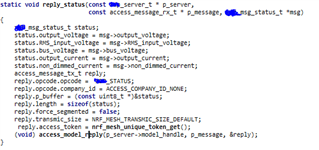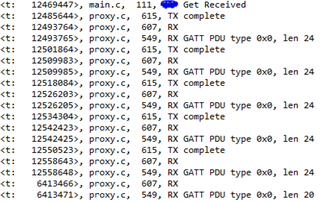Hello,
i am currently trying to add my own model to the Mesh Android App. It should just be a simple sensor model.
It already works to have an own Window, where I can send a custom get Command. On the microcontroller side the get command is also received and a message is returned.
The problem is, that the message is parsed wrong on the app side. The App thinks, that the Access pdu is an array with 12 entrys, so the opcode can not be used correctly.
I do not know where the error comes from, I was trying to understand where in the meshprovisioner software stack the access message length is set but i could not find it.

Here you can see, that the access PDU actually consists of the right elements 0x82C2 is actually my opcode but has 10 extra bytes..
What should also be mentioned is, that the Bluetooth message consists of 5 Bytes which are the sensor Values, so there are also 5 Bluetooth parts sent. Maybe this causes the error


Thanks in advance
Best regards
Julian Demicoli



